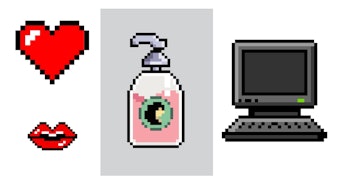
While ingredients tend to draw all the accolades in cosmetic product development, the invisible and parallel world of equipment, devices and methods for formulation, testing, manufacturing and more is experiencing major upgrades. For example, Oracle1 noted industrial manufacturing shifted from machine-based assembly lines to “smart factories” using robotics, the Internet of Things (IoT), data analytics, augmented reality (AR) and other cutting-edge technologies.1 Similarly, WestMonroe projects manufacturing will be driven by AI and machine learning; cross-functional data strategies to unlock revenue and profitability; smart manufacturing focused on cost reduction and improved efficiencies; and supply chain resiliency.2
Log in to view the full article
While ingredients tend to draw all the accolades in cosmetic product development, the invisible and parallel world of equipment, devices and methods for formulation, testing, manufacturing and more is experiencing major upgrades. For example, Oracle1 noted industrial manufacturing shifted from machine-based assembly lines to “smart factories” using robotics, the Internet of Things (IoT), data analytics, augmented reality (AR) and other cutting-edge technologies.1 Similarly, WestMonroe projects manufacturing will be driven by AI and machine learning; cross-functional data strategies to unlock revenue and profitability; smart manufacturing focused on cost reduction and improved efficiencies; and supply chain resiliency.2
Cosmetic mixing equipment is experiencing shifts, too, driven in part by the need for greater functionalities over traditional techniques. Per Maximize Market Research (MMR), the latest equipment enables the production of uniform, high-quality products while cutting mixing time and lowering electricity costs. Furthermore, high-throughput solutions that manage a wide range of viscosities and shear needs provide greater manufacturing flexibility – which is especially relevant considering frequent changes in the formulation of products due, in part, to regulatory changes or retail requirements (for more on mixers, see Dillon).
Beyond physical mixing are digitized devices such as flow meters to monitor and maximize production; quantum computing to calculate formula combinations; computational fluid dynamics to optimize formulas and save time, waste and cost during scale-up; and others. Even safety and efficacy testing have been migrated to chips and AI-driven molecular models. During the SCC Annual Meeting, for example, combined methods of metagenomics and droplet-based microfluidic technologies were described for studying sensitive skin. Also, cryo-SEM and energy dispersive spectroscopy (EDS) were used to characterize sunscreens.
To gather first-hand accounts of current and future trends in equipment, devices and production for cosmetic product development, we asked industry experts to weigh in. Following are their responses.
Becker sees high demand for a cell spectrometer to conduct trans-epithelial electrical resistance (TEER) tests to detect the quality of cell cultures in terms of maturity or damage to the cell membranes."
Safety – In vitro TEWL, Permeability and Vitality
According to Beate Becker, a marketing specialist for Courage+Khazaka Electronic GmbH, the cosmetics market is expanding in emerging economies, giving rise to a growing need for product testing. “In the dynamic world of the cosmetics industry, research is constantly faced with the challenge of finding innovative ways to ensure the consumer safety and efficacy of products,” Becker writes. “Since more than 40 countries of the world have banned animal testing for cosmetics, product development [must] focus increasingly on in vitro testing, especially in the early stages of formulation.”
To ensure product safety, tests for skin barrier damage, permeability and cellular vitality are critical, per Becker. “One of the most important parameters to test skin barrier damage is the trans-epidermal water loss (TEWL).” In this case, the company’s Tewitro device is said to offer “a powerful tool based on the globally most-used open chamber measurement of the Tewameter.” The device can simultaneously measure water evaporation from skin tissue models, including cultured sets in up to 24 wells.
Another member of the Tewameter family is the Invitro Tewameter, which, according to Becker, is perfectly suited to fit on a Franz cell. “It offers a convenient way to study skin permeability and dermal absorption necessary for safety and efficacy testing.”
Finally, Becker sees high demand for a cell spectrometer to conduct trans-epithelial electrical resistance (TEER) tests to detect the quality of cell cultures in terms of maturity or damage to the cell membranes. “Currently, a compact, easy-to-use instrument is in development,” Becker adds.
Quality Control, Eco Replacements and Supplemental Approaches
For Thomas Luxbacher, Ph.D., principal scientist at Anton Paar GmbH, there remains a need to evaluate the basic quality of products, especially considering the introduction of eco-friendlier ingredients. “We focus on scientific instruments for material characterization for a variety of different applications,” Luxbacher writes.
In cosmetics, for example, the company offers multiple parameters and measurement techniques to evaluate the density, viscosity, etc., of liquid formulations, as well as characterize complex fluids, and measure emulsion stability by droplet size and zeta potential (charge) analysis. More sophisticated methods include small angle X-ray scattering, e.g., for the structural characterization of micelles; and the streaming potential measurement (zeta potential analysis) at solid-water interfaces.
“We consider the complementarity of analytical methods for the assessment of both liquid and solid properties essential for the development of novel, environmentally friendly formulations that still comply with the increasing consumer demands,” Luxbacher explains. Currently, the company is focused on the characterization of hair care formulations.
“The increasing complexity of formulations, marginal differences in their composition, or the ban of synthetic polymers and their replacement by biodegradable constituents are among the challenges that we consider in this market segment,” Luxbacher states. “We therefore complement the assessment of emulsion stability by electrophoretic light scattering (zeta potential in colloids) with [the assessment of] effectiveness by visualizing the interaction of emulsion components with hair.”
Per Luxbacher, the latter analysis employs the streaming potential measurement for characterizing adsorption processes at the hair-emulsion interface under dynamic and equilibrium conditions. “This detailed example suggests the needs for analytical methods to supplement traditional tools such as combing tests (e.g., for testing the effect of hair care formulations) or sensory panels,” he concludes.
FDA Standards and AI-fueled Data Processing
Simon Schlecht, area sales director of North America for Ekato Systems GmbH, sees FDA standards – now fueled by the new MoCRA regulation – as driving cosmetic production. “The EPOS operating system [Ekato Process Operating System], compliant with the latest FDA standards (CFR 21 part 11), is gaining traction in cosmetic applications,” Schlecht writes.
“Features like Smart Catch record all interactions and alarms, which are consolidated in the batch report, forming the foundation for quality analysis and batch traceability,” he adds. Indeed, compliance with current good manufacturing processes is a critical component of MoCRA, which the industry will see take effect on July 1, 2024.
Further, AI and digitized solutions can enhance creativity and flexibility in product manufacturing, while also troubleshooting potential issues ahead. “[Ekato’s] newly introduced Recipe Creator, available in matrix or flow chart formats, allows for remote programming, loops, part recipes and library options,” Schlecht explains. “The forthcoming EIIOT feature will leverage EPOS data for predictive maintenance, facilitating early detection of maintenance needs, variable intervals and expedited delivery times, thereby reducing downtime,” he adds.
The future of production, to Schlecht, lies in AI and extensive data processing. “With the steady rise in automation, product quality and safety can be enhanced by minimizing human errors, boosting productivity and cutting costs. Automation also empowers users to effortlessly control, monitor and optimize their processes, ensuring regulatory compliance.”
References
1. Lindquist, M. (2023, Jul 28). Top 5 industrial manufacturing trends in 2023. Oracle. Available at https://www.oracle.com/industrial-manufacturing/industrial-manufacturing-trends
2. WestMonroe. (2023, Dec.). 2024 Outlook: The future of the manufacturing industry. Available at https://www.westmonroe.com/perspectives/report/manufacturing-outlook
3. Maximize Market Research (MMR). (Accessed 2024, Jan 1). Cosmetics mixing equipment market: Industry analysis and forecast (2023-2029). Available at https://www.maximizemarketresearch.com/market-report/cosmetic-mixing-equipment-market/148304/












